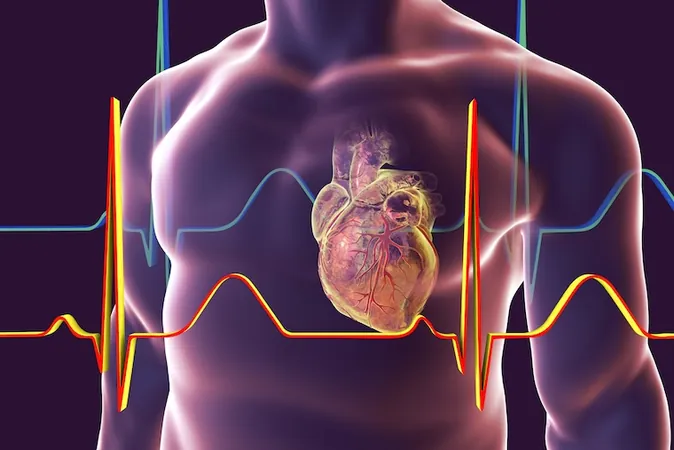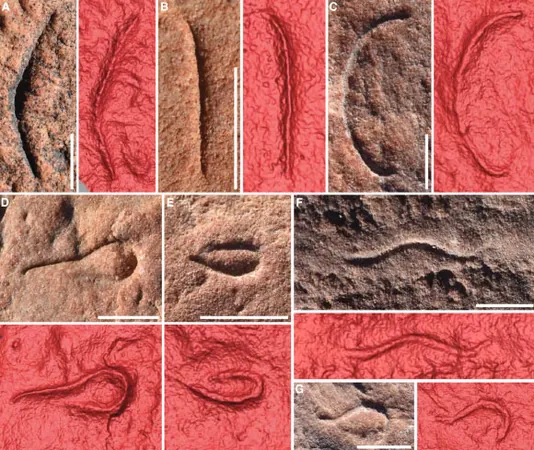
Breakthrough Technique Revolutionizes Diagnosis of Coronary Artery Disease!
2024-11-19
Author: John Tan
Breakthrough Technique Revolutionizes Diagnosis of Coronary Artery Disease!
Coronary artery disease (CAD), the leading form of heart disease that affects over 70% of individuals aged 60 and above, has long been a significant health concern worldwide. However, a groundbreaking new technology promises to enhance diagnosis and treatment efficacy. An international study led by investigators from the School of Medicine reveals that this innovative method allows doctors to quantify blood flow within the heart, vastly improving their ability to diagnose CAD.
This cutting-edge technique builds upon cardiac magnetic resonance imaging (CMR) used alongside stress testing, a noninvasive approach for assessing heart function and detecting potential blood-flow blockages. By integrating new blood-flow data into the CMR evaluation, researchers found that this combined method significantly outperformed traditional image assessments by human experts.
Dr. Amit Patel, a leading cardiologist and imaging specialist at UVA Health, emphasized the impact of these findings, stating, “This non-invasive tool enables medical centers, regardless of their diagnostic expertise, to accurately identify patients at risk for CAD.” He added, "These advances will help to better prioritize patients who may require invasive procedures such as heart catheterization."
A Clear Picture of CAD
Coronary artery disease remains the leading cause of death in America, claiming hundreds of thousands of lives each year due to fatty plaques clogging the arteries that supply blood to the heart. This condition can lead to severe heart attacks and strokes, making accurate diagnosis crucial.
In this landmark study involving 127 patients across ten global sites with a mean age of 62, researchers aimed to differentiate between two forms of CAD: "obstructive" and "nonobstructive." While obstructive CAD is less frequent, it often necessitates surgical interventions such as bypass or stenting. On the other hand, nonobstructive CAD typically necessitates medical management but can still precipitate heart attacks.
The results from the enhanced CMR with blood-flow analysis were compelling. Of the participants, 56 (approximately 44%) were diagnosed with obstructive CAD, with the innovative technique proving far superior in detection compared to traditional methods and human interpretation of scans.
Dr. Patel expressed hope that these findings would reduce unnecessary invasive procedures. He noted the potential for future studies to explore how this blood flow measurement could benefit patients with other cardiovascular conditions, like heart failure.
Publication and Future Implications
The research team's findings have been published in the prestigious *Journal of the American College of Cardiology: Cardiovascular Imaging*, underscoring the importance of these advancements in medical science.
This breakthrough technique not only marks a significant step forward in accurately diagnosing CAD but also hints at a future where non-invasive methods could transform heart health management globally. As we continue to confront the challenges posed by heart disease, innovations like this offer hope for improved outcomes for millions.
Stay tuned for more updates on how this technology could reshape cardiac care and potentially save lives!




 Brasil (PT)
Brasil (PT)
 Canada (EN)
Canada (EN)
 Chile (ES)
Chile (ES)
 España (ES)
España (ES)
 France (FR)
France (FR)
 Hong Kong (EN)
Hong Kong (EN)
 Italia (IT)
Italia (IT)
 日本 (JA)
日本 (JA)
 Magyarország (HU)
Magyarország (HU)
 Norge (NO)
Norge (NO)
 Polska (PL)
Polska (PL)
 Schweiz (DE)
Schweiz (DE)
 Singapore (EN)
Singapore (EN)
 Sverige (SV)
Sverige (SV)
 Suomi (FI)
Suomi (FI)
 Türkiye (TR)
Türkiye (TR)